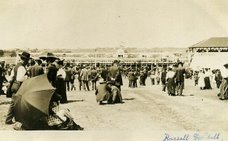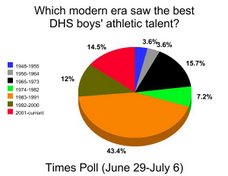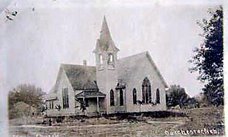 Dorchester has its own YouTube sensation.
Dorchester has its own YouTube sensation.Thanks to an e-mail from a Times reader, we have been alerted to a video featuring a tour of Dorchester's Weber Feedyards, located just a couple of miles west of town. Produced by the Alliance for the Future of Agriculture in Nebraska (A-FAN), the video feature feedyard owner and operator Joel Weber, who explains the importance of providing good care for cattle. During the short video, he notes that comfortable cattle perform better and produce higher quality beef.
See the video by clicking here.
Livestock production is a key to wealth in Nebraska. A-FAN reports that Nebraskans living in the state's top seven livestock producing counties enjoy higher levels of personal income than those living in other non-metropolitan counties, according to a study by NPPD. Residents in those top seven counties had a 10% higher average annual per capita personal income than their counterparts in other rural counties.
When it comes to the livestock industry, Saline County is trailing the herd. Saline County ranks 48th of the 93 Nebraska counties when comparing market value of ag products per acre, according to an NPPD study. Saline County has a $190-per-acre ag product value, of which about $54 can attributed to the county's livestock and livestock products. That is 10% less than the Nebraska average. We agree with our e-mailing reader who said, "More livestock in Saline County would go a long way in lowering the property tax burden."


















































saline county commissioners seem to always vote to stop growth and pacify the NIBMY types. they can't see beyond the nose on their face if it involves other people practicing free enterprise and making money. after all, how does that benefit the "little guy", right?
ReplyDeleteDoes this mean "factory farming"?
ReplyDeleteYeah, factory farming. Because there's so much of that going on in our neck of the woods. I am betting the person who wrote that doesn't even live in the state.
ReplyDeletePoster "March 29, 2010 5:33 PM" is correct. I am originally from Saline County and, my family owns dryland. I was seeking clarification on the issue. A few years ago the County nixed an idea for a large-scale operation near Wilber.
ReplyDeleteInteresting news from our friends at USDA. Ninety-one percent of U.S. farms are classified as small—gross cash farm income (GCFI) of less than $250,000.
ReplyDeleteAbout 60 percent of these small farms are very small, generating GCFI of less than $10,000. These very small noncommercial farms, in some respects, exist independently of the farm economy because their operators rely heavily on off-farm income.
Overall farm production, however, continues to shift to larger operations, while the number of small commercial farms and their share of sales maintain a long-term decline.
“Small Farms in the United States: Persistence Under Pressure”
Interesting news from our friends at USDA. Ninety-one percent of U.S. farms are classified as small—gross cash farm income (GCFI) of less than $250,000. About 60 percent of these small farms are very small, generating GCFI of less than $10,000. These very small noncommercial farms, in some respects, exist independently of the farm economy because their operators rely heavily on off-farm income.
Overall farm production, however, continues to shift to larger operations, while the number of small commercial farms and their share of sales maintain a long-term decline.
“Small Farms in the United States: Persistence Under Pressure”
http://www.ers.usda.gov/
publications/eib63/
Bigger is better and more viable.
ReplyDeleteTake a drive in the countryside. The farmhouses have been replaced by center pivots. That's not the way I like it but it is reality.